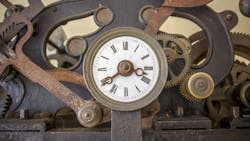Timing Decisions 101: Oscillator or Clock? (Download)
As technology has become more digital, timing systems have become a critical component in most electronic systems. Smartphones, PCs, IoT devices, networking equipment, and many other devices rely on internal timers, counters, and clocks. These timing components generate timing pulses that enable the internal electronics to synchronize events with a precise frequency, ensuring data transmission through processor pipelines and interconnected systems.
As electronics OEMs and device developers are creating more advanced products, incorporating high-performance computing capabilities to support AI and edge applications, these timing components have only become more important.
For these high-speed serial data-transmission applications, even small amounts of clock jitter and noise can cause high bit-error rates that impact system performance. As a result, some hardware designers and architects are now considering their clocking options early in the design process, rather than later.
